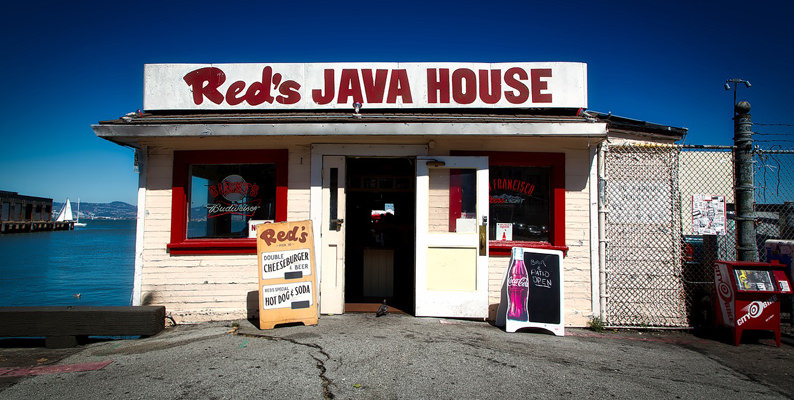-
What a Family Diner Taught Me About Customer Service
Thu, 8 Sep 2016, in Customer Service
Enjoying this one? You might also like Why Customer Service Employees Are Unappreciated

There was a small independent diner at the edge of the campus during my college years.
This place was relatively empty throughout the day, in stark contrast to the coffee chain not 50 yards away which was constantly packed with students. Unlike my peers who gravitated to the nearest coffee chain in the vicinity, I liked the fact that I knew the owner by name and got the friendly “Come back soon” every time I left.
Read More: How One Ice Cream Shop Growth Hacked Its Way to Success
Yet this is hardly the reason why I continued going to the musky establishment with bad selection, worse decor, and a lack of a self-service aisle complete with an assortment of milks, sugars and cup lids.
The reason was simple: the coffee was good and the service even better. Something else stuck out. I got the impression that the sale was not necessarily the end goal for the diner. As a result, I felt I was getting the product exactly how I wanted by someone who didn’t see me as an inconvenience or wasn’t rushing me to help the next person.
Look beyond service speed
The fast-paced times we live in often place unrealistic expectations on service speed. However, it’s been shown that faster service doesn’t correlate to happier customers or more profit.
Let’s say I go to a popular fast-food restaurant for lunch. Despite it being busy, the owner is friendly and helpful in assisting me with the order. The food appears to be hot and fresh. Yet, it takes about 5 minutes instead of the usual 4. Would I be angry?
Probably not, and that’s the idea. We don’t tend to notice longer service times if that’s what it takes to get a quality product. If our expectations are exceeded (regardless of service speed) our minds register it as a positive experience.
Self-service is not for everyone
There are pluses and minuses to doing things yourself, but by and large we prefer to be the ones making that distinction.
When I’m in a rush, I like to bag my own groceries in the supermarket. If it’s freezing cold out, I’ll drive an extra mile and look for a full-service station. What type of service we choose largely depends on our needs at that point in time.
 photo credit Eli Duke
photo credit Eli DukeAs a result, companies shouldn’t look at self-service as a trade-off or a replacement for other types of support. Instead, they should look at creating the best experience for their customers. This means either allocating equal amounts of resources for all communication channels – or focusing on the channels that work for your application.
Offer choices, but not too much
There were only two or three coffee options at the diner, but who needed more? Unlike at the upscale coffee shop, you weren’t presented with four different types of sugar (or a milk collection, which you invariably spill on yourself).
All the while the next person in line is staring you down for their turn.
In theory, more choice should give us the ability to customize the product to our liking. But as Barry Schwartz demonstrated in his TED talk, people are dissatisfied with the results when presented with more options. More choice is synonymous with anxiety, lost time during the decision making process or disappointment with not being able to come up with a decision at all.
 photo credit Phil Richards
photo credit Phil RichardsThe same applies to customer support. Instead of confusing your customers, understand their question and guide them to their desired solution. Failing to do that, the customer should be presented with narrowed down choices that are relevant to them. This is something our search algorithm does: it suggests unique, relevant answers in search results based on every customer query.
Think in long-term relationships
Businesses should realize that customer relationships don’t come to an end when the customer leaves. During the course of their journey you must ensure that the product or service you’re offering is exactly what your customers want or need. When you lose track of this process, you lose track of what makes your customers stick around.
Consider that your long-term, loyal customers present the best source of referrals (i.e. those who are interested and engaged because they were referred by people who they know and trust).
Showing customers you care doesn’t require a whole lot on your part:
- Do the work for them when possible. Keeping customers satisfied means saving them time and certain aggravation. For example, input the data for them instead of linking them to knowledge base articles.
- Make it easy to find the answer. If customers want to do things themselves, the user experience (including your website and help desk software) must make it easy for them to do so.
- Express your appreciation for their business. Show appreciation when customers choose you over your competitors. A coupon, a discount or a personalized “thank you” note is always a welcome surprise.
Always be aware who you’re selling to
A sale to a wrong customer isn’t a sustainable sale.
Someone who goes to a diner for their coffee may not necessarily be looking for an upscale coffee shop experience in the first place. These expectations are set beforehand by the brand’s messaging.
I can’t stress this enough. Your messaging should be so clear and effective that there shouldn’t be any doubt to its authenticity. Customers nowadays are quick at picking up promises that don’t live up to what’s happening on the ground. And if that’s the case, there’s nothing stopping these gripes from being spilled on social media for the world to see.
To the average person, the diner I frequented wouldn’t be anything special. What made up for it was the coffee and excellent service. In the end, my experience was so pleasant that I couldn’t imagine my college mornings without it.
So remember: focus on the customer experience once they decided to do business with you. Your customers will be around long after the “coffee fads” are gone!
Read More: 20 Customer Service Tips from Helprace
Tags: customer service


